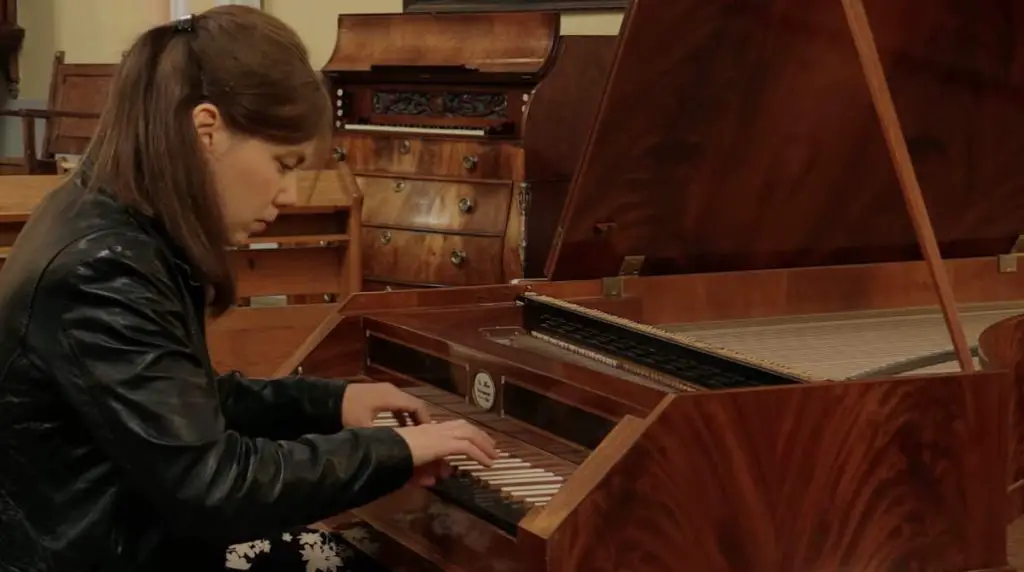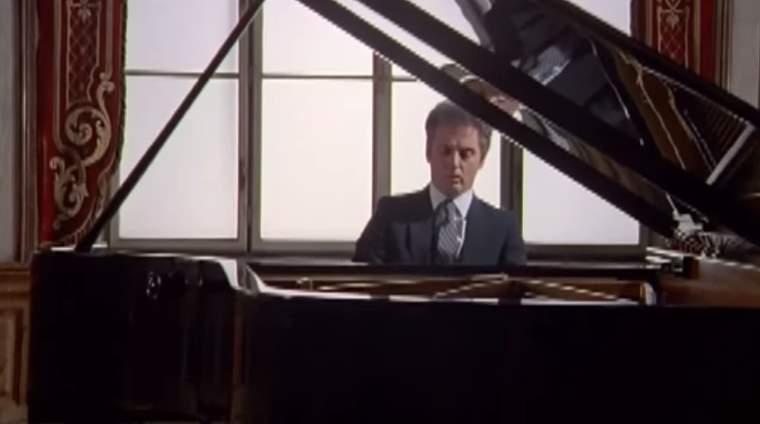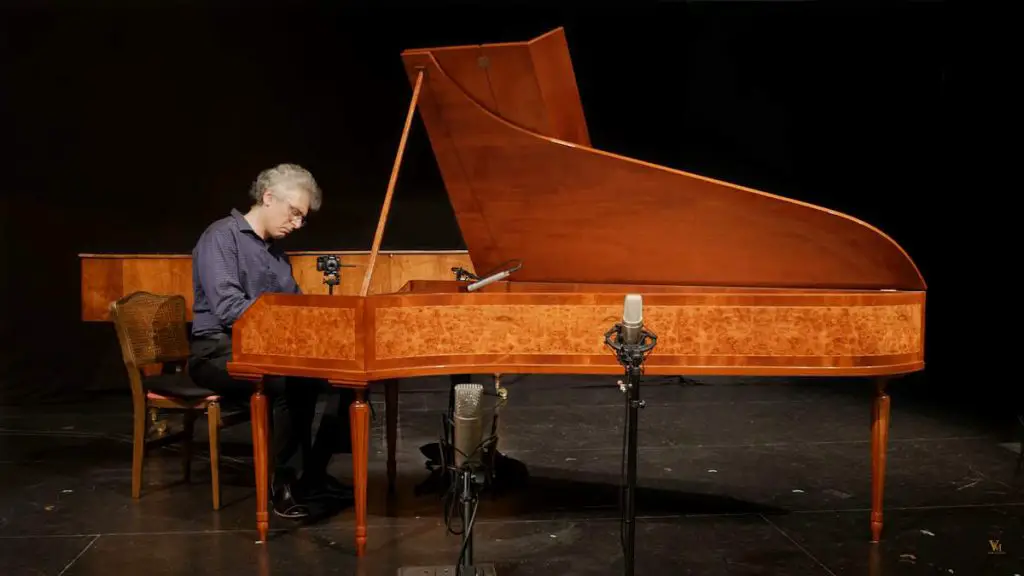Hungarian-born classical pianist Petra Somlai performs Ludwig van Beethoven’s Piano Sonata No. 14 in C-sharp minor on fortepiano. The piece is marked Quasi una fantasia, Op. 27, No. 2., and is popularly known as the Moonlight Sonata. Filmed on 2 June 2020 at Oud-Katholieke Parochie (Old Catholic Church), ‘t Huis te Poort, Schiedam, The Netherlands. Published by the American Classical Orchestra channel.
Beethoven’s Piano Sonata No. 14, the “Moonlight Sonata”
Ludwig van Beethoven’s Piano Sonata No. 14 in C-sharp minor “Quasi una fantasia”, Op. 27, No. 2, popularly known as the Moonlight Sonata, was completed in 1801 and dedicated in 1802 to his pupil, Countess Giulietta Guicciardi (23 November 1782 – 22 March 1856).
It was nicknamed “The Moonlight Sonata” after Beethoven’s death by the German poet and music critic Ludwig Rellstab (13 April 1799 – 27 November 1860) who, in 1832, had this inspiration on a moonlit night on the banks of the Reuss River which runs from Lake Lucerne, Switzerland.
Some biographers make the connection between the unshared love the composer held for Giulietta Guicciardi and the sonorities of the first part. Even more so, this sonata was dedicated to Giulietta, the musical theme of the first part being borrowed from a German ballad as Wyzewa observed.
According to the Swiss classical pianist and conductor Edwin Fischer (6 October 1886 – 24 January 1960), who published a number of books on teaching, and one on the piano sonatas of Beethoven, this image has no connection with Beethoven’s intentions. He rather attributes this atmosphere to the feeling that overwhelmed the composer when he took watch at the side of a friend who prematurely left the world of the living
In one of Beethoven’s manuscripts there are several notes from Mozart’s Don Juan, notes that follow the killing of the Commander by Don Juan, and lower, this passage is rendered in C sharp minor in absolute resemblance to the first part of the sonata in C sharp minor. Analyzing and comparing, one could realize that it cannot be the case of a romantic moonlit night, but rather of a solemn funeral hymn.
Movements
- Adagio Sostenuto. The first movement of Moonlight Sonata is based on an accompanying motif in triplet rhythm that, together with an accented notes motif, creates the impression of a grave, meditative state of mind. The composer adds the following direction at the beginning of the first part: “Si deve suonare tutto pezzo delicatissimamente e senza sordino” which means that the performer should play the part with great delicacy and without dampers. It is also true that the modern piano has a much longer sustain time than the instruments of Beethoven’s day. Therefore, his instruction cannot be followed by pianists playing modern instruments without creating an unpleasantly dissonant sound.
- Allegretto. The second movement is very small in size which leads to the idea that it was conceived more as a connection between the first and third part, rather than a part all by itself. The feeling is now denser in consistency, and the fairly meditative character of the first part gradually fades away, preparing for the tumult of the third part.
- Presto Agitato. The finale of Moonlight Sonata is twice as long as the first two parts. Fischer felt this part as being the representation of a storm. A very impetuous storm, if we take into account the fact that at the time when he was composing the sonata, Beethoven was madly in love with Giulietta with whom he had hopes of getting married. The listener can distinguish two themes in this part: a tempestuous one built on arpeggios and strongly accented notes and a second theme, more lyrical in the form which comes into contrast with the first one. Both themes are magnificently interlaced and create the impetuous storm emotion Fischer experienced.
The performer: Petra Somlai
Since winning the 2010 International Fortepiano Competition in Bruges, Hungarian-born pianist Petra Somlai has appeared across Europe, the United States, and Japan as a soloist in concert series and major international early music festivals.
With degrees in fortepiano and harpsichord as well as conducting and piano, she has also performed as a conducting soloist with various orchestras. Petra Somlai is currently a professor of fortepiano at the Royal Conservatory in The Hague, where she also teaches the historical development of the fortepiano and the classical piano.

Pianoforte (fortepiano)
A fortepiano is an early version of the piano, from its invention by the Italian instrument maker Bartolomeo Cristofori (May 4, 1655 – January 27, 1731) around 1700 up to the early 19th century. It was the instrument for which Haydn, Mozart, and the early Beethoven wrote their piano music.
Starting in Beethoven’s time, the fortepiano began a period of steady evolution, culminating in the late 19th century with the modern grand. The earlier fortepiano became obsolete and was absent from the musical scene for many decades.
In the 20th century, fortepiano was revived, following the rise of interest in historically informed performance. Fortepianos are built for this purpose today in specialist workshops.
Sources
- Piano Sonata No. 14 (Beethoven) (Moonlight Sonata) on Wikipedia


